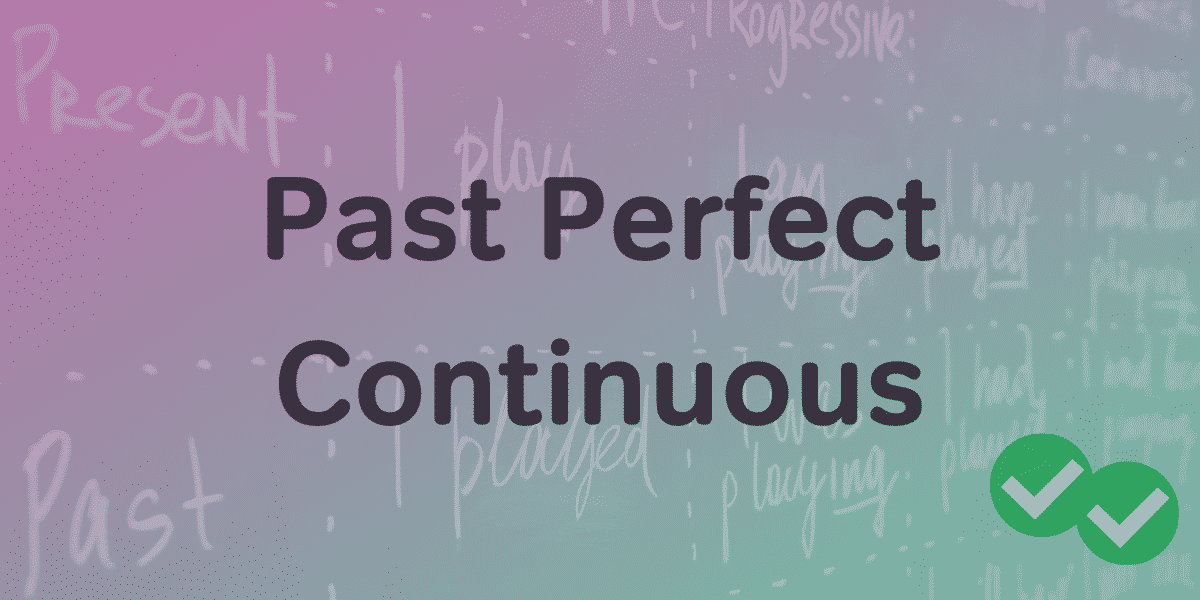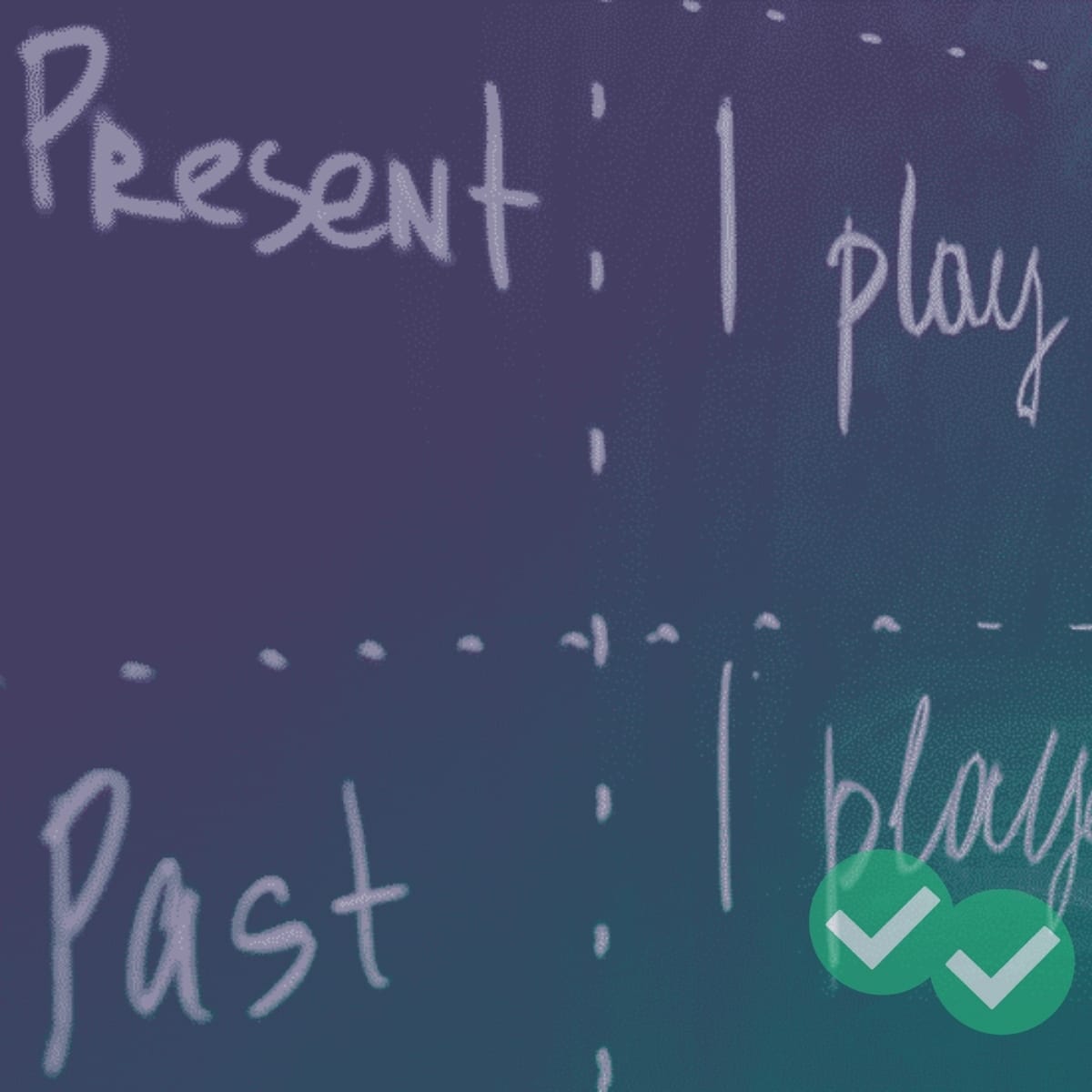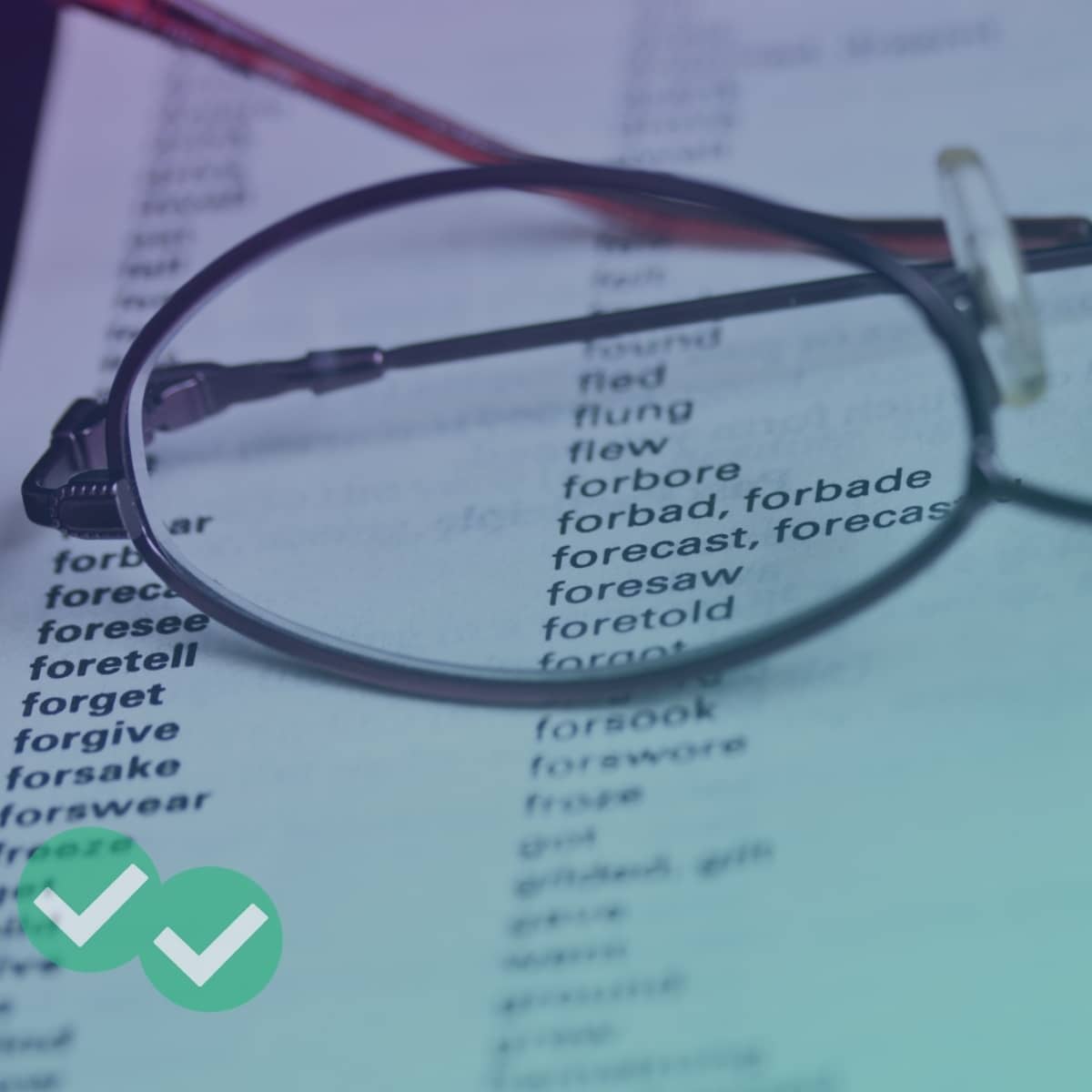
This article focuses on the past perfect continuous tense. To see resources and breakdowns of each verb tense, visit the 12 English Verb Tenses page.
Forming the Past Perfect Continuous Tense (with Tables)
Quick Reference Table: The Past Perfect Continuous Tense in All Forms
KEY
Ving → Present Participle
| Forms | Verbs |
| + | Had + been + Ving
I had been writing for an hour when they called about the event. |
| ? | Had + subject + been + Ving
Had you been working for three hours when they called? |
| – | Had + not + been + Ving
I had not been working for very long when they called. |
The formula for writing the past perfect continuous tense is: had + been + present participle.
Examples:
- We had been walking on the path when a deer crossed in front of us.
- He had been practicing for months when he finally got the call for the audition.
- Jared had been pitching the entire game before his arm finally gave out.
- Brittany had been working for the company for a decade when they laid her off.
- The dogs had been hunting all evening when they finally spotted a rabbit.
Making It Negative
To make the past perfect continuous tense in negative form, use this formula: Had + not + been + present participle.
Examples:
- I had not been studying English for very long before I moved to America.
- He hadn’t been working there very long before they decided to lay off 1,000 workers.
- Sarah hadn’t been attending class very often when the accident happened.
Asking a Question
When asking a question in the past perfect continuous tense, use the formula: Had + subject + been + present participle.
Examples:
- Had you been waiting long when he arrived?
- Had she been speaking for a while when they showed up?
- Had Joey been attending class very often when the accident occured?
When To Use the Past Perfect Continuous Tense
This tense is very similar to the present perfect continuous tense because they both start with an action that begins in the past. However, to use the past perfect continuous tense, the action must have ended at a certain point in the past.
Use #1
When describing an action that began in the past and continued to another point of time in the past.
Examples:
- She had been speaking for nearly an hour before her father arrived.
- They had been working for three days before they were fed.
- We had been walking for five miles before we noticed we forgot my little brother.
- Stephanie hadn’t been working for thirty minutes when the robbers entered the bank.
- Had you been waiting long when the bus arrived?
Use #2
When describing the cause and effect of something from the past.
- Grandma was tired because she had been watching the kids all day.
- Terry was bored because he had been typing for 4 hours.
- He did well on his exam because he had been studying for months.
When Not To Use It
Continuous tenses can’t be used with non-continuous verbs. However, there are many verbs that can be both in different situations.
- She had been wanting to leave until Jenny showed up. – Incorrect
- She had wanted to leave until Jenny showed up – Correct
Also, it’s important to note that without a time duration, most speakers will use the past continuous tense instead of the past perfect continuous. However, this can change the meaning of the sentence.
The past continuous is used to emphasize an interrupted action in the present, but the past perfect continuous is used to emphasize the duration of time before something else that happens. Look at these examples:
- She was exhausted because she was working so much.
This sentence implies that she is exhausted because she is working at the moment.
- She was exhausted because she had been working so much.
This sentence implies that she is exhausted because she had been working over a period of time. She could still be working or she could be finished.



Leave a Reply